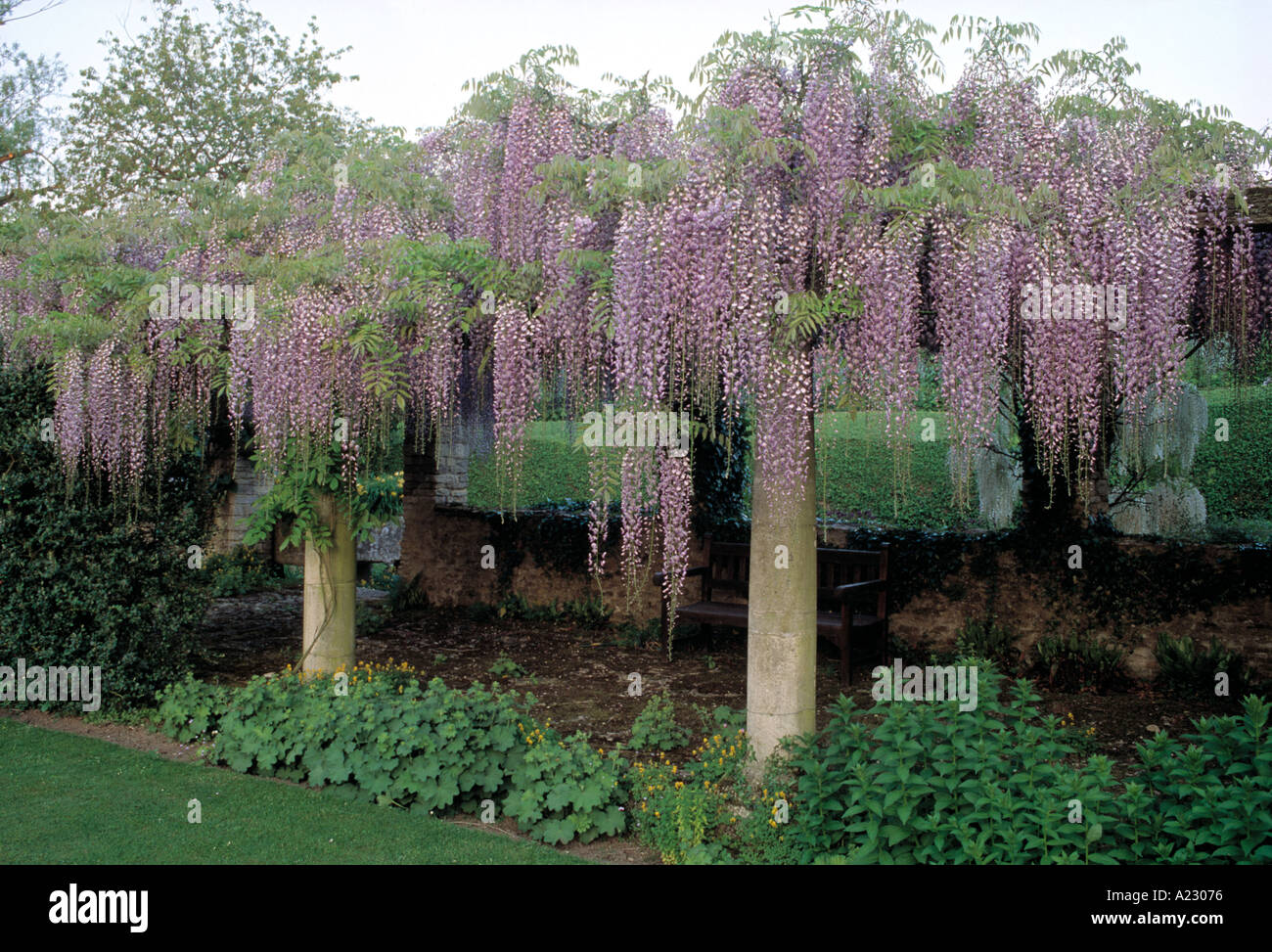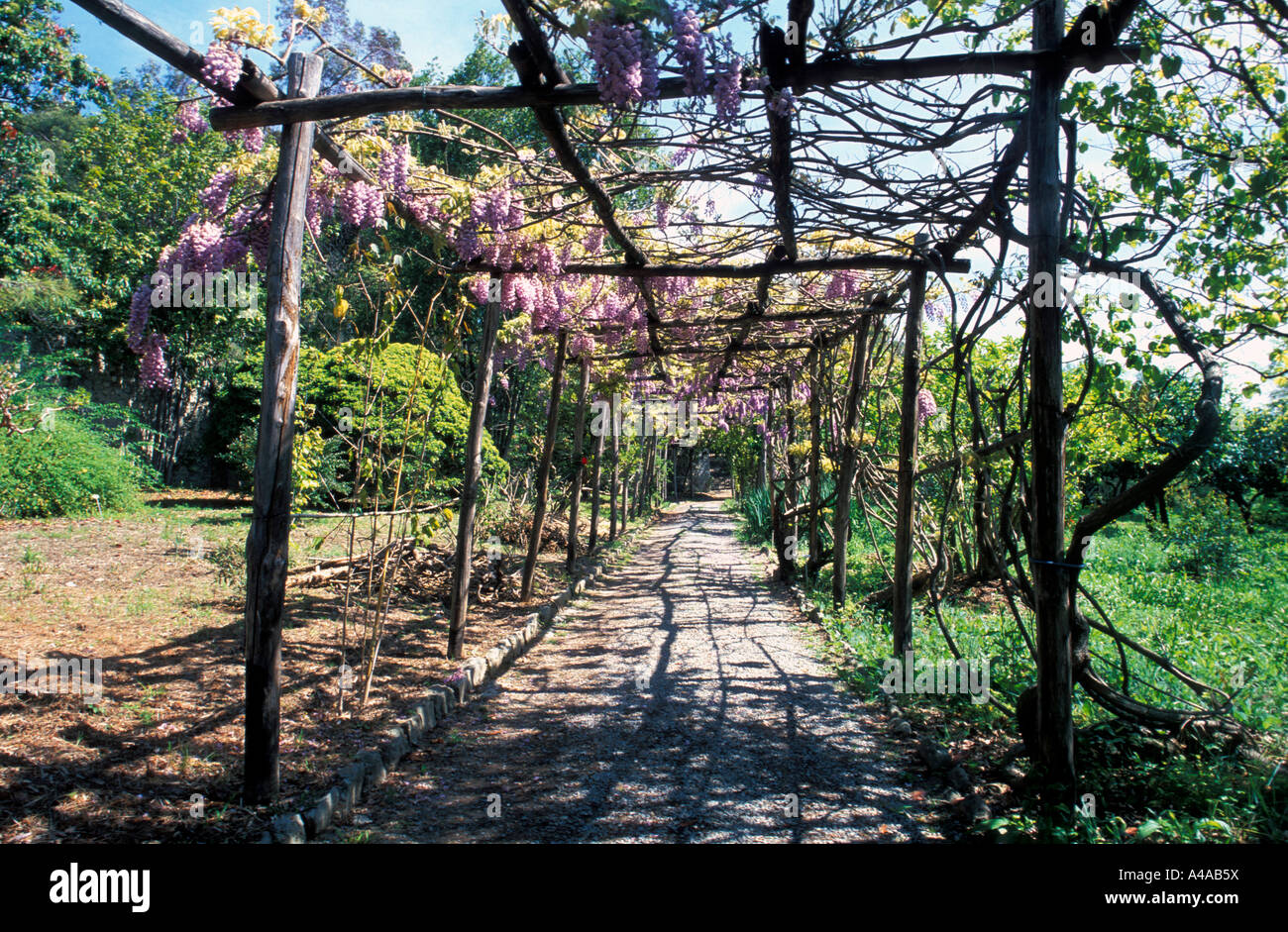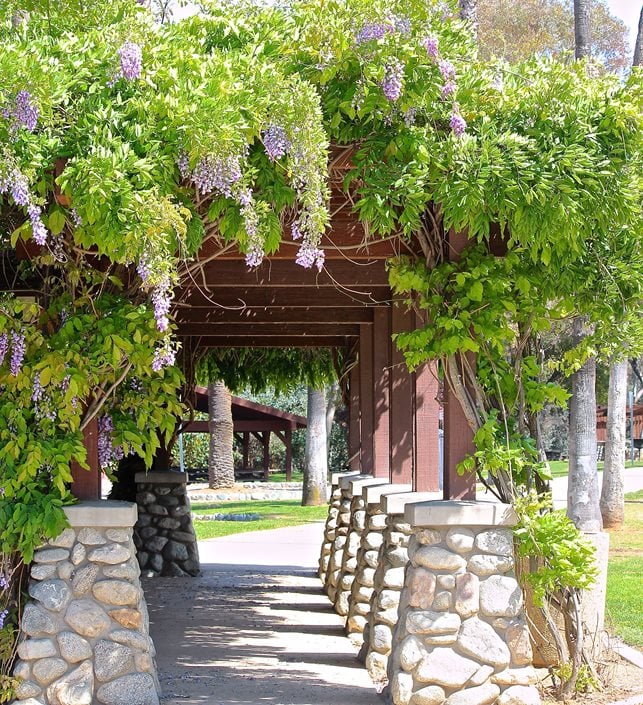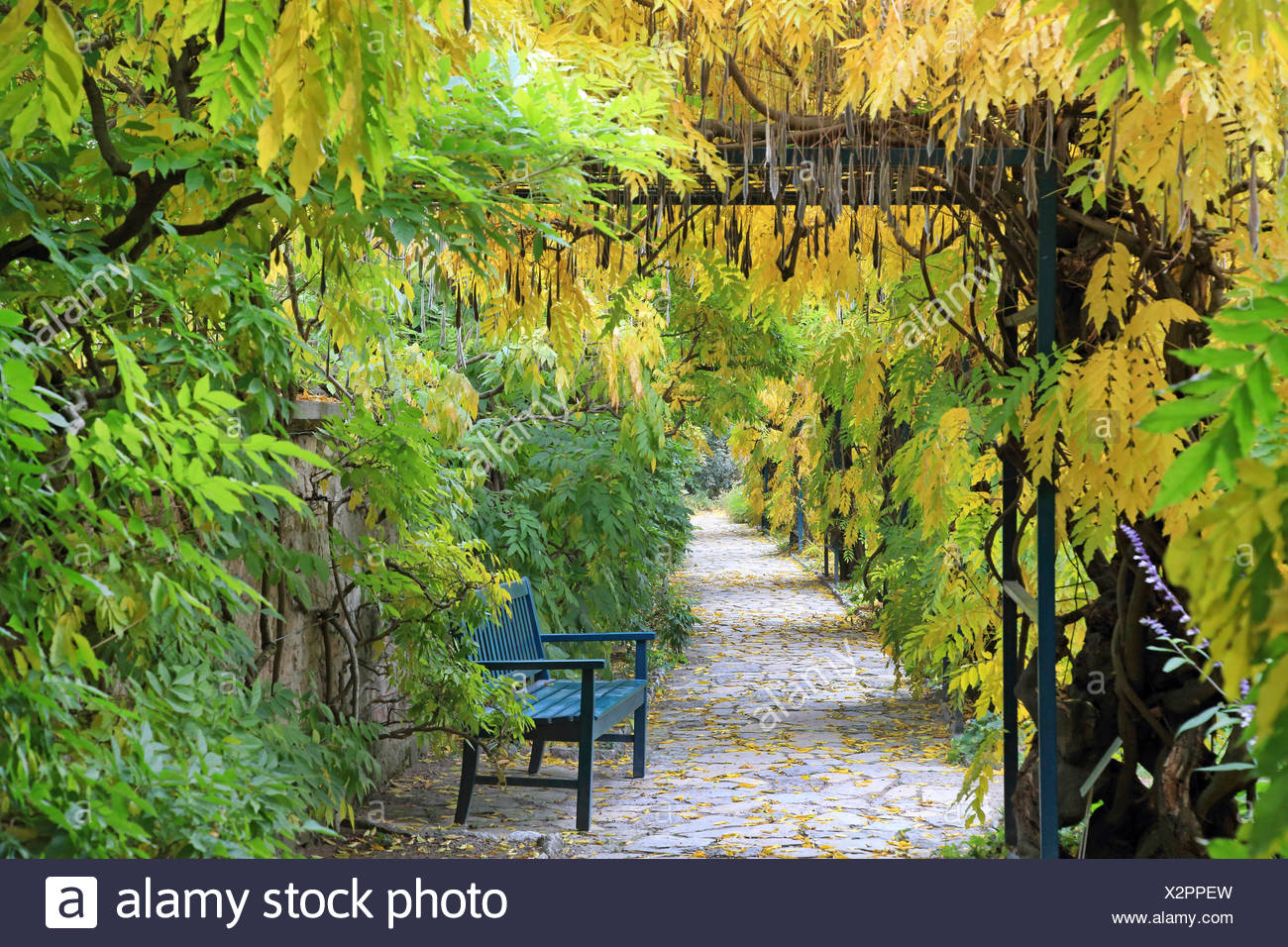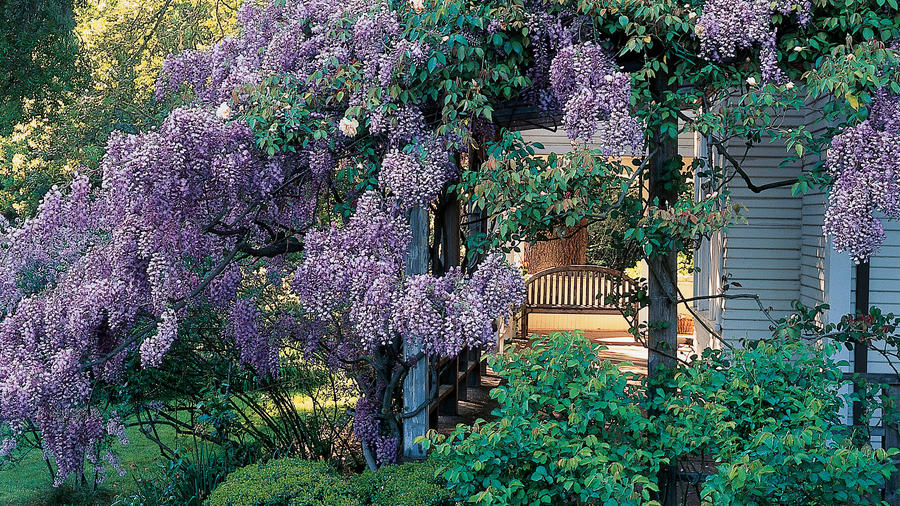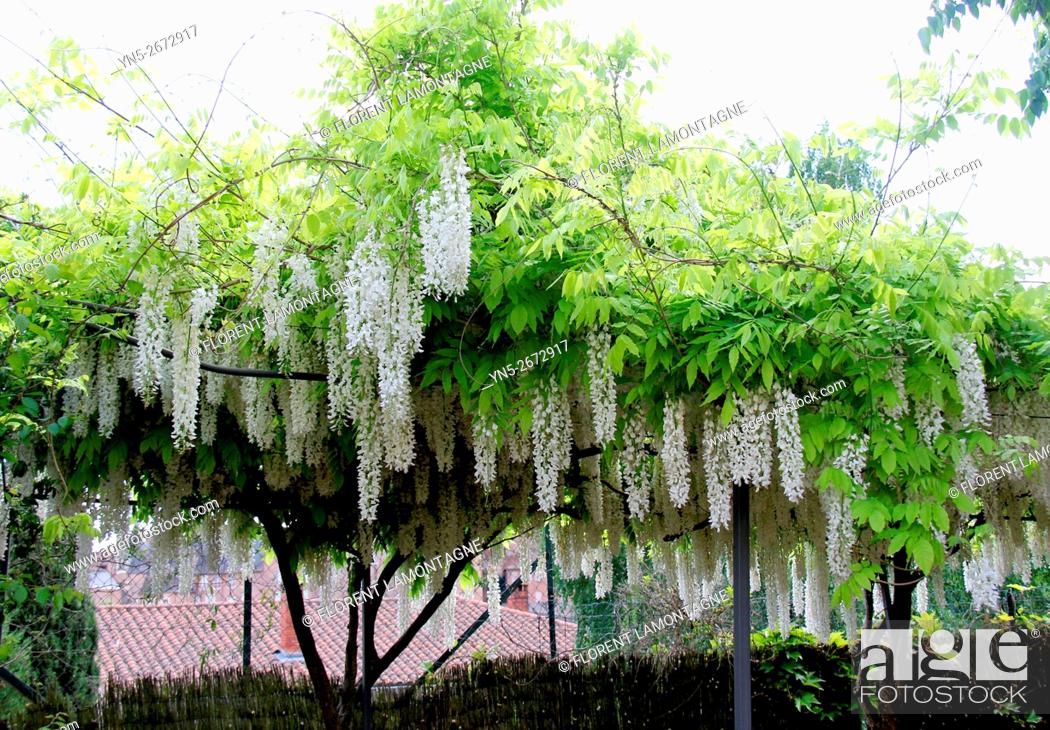Wisteria Floribunda Pergola

Wisteria floribundais a desirable selection to grow on pergolas and arbors because its long flowers hang dramatically through the top.
Wisteria floribunda pergola. Wisteria climbs using its strong twining shoots but it cannot grip a wall by itself and needs support in the form of a strong trellis pergola or arbor. Wisteria floribunda japanese wisteria which has the longest racemes of all the species provides a dramatic display on garden structures such as pergolas where the racemes can hang free unimpeded by branches or foliage. The second pruning tidies the vine up and helps encourage more blooms. Patio pergola wisteria pergola pergola plans backyard wisteria trellis wooden pergola pergola attached to house pergola with roof white pergola wisteria blooms add fragrance to your cottage garden wisteria is a fragrant plant that adds great color to any cottage garden.
It requires pruning twice a year. These vines make a spectacular addition to your pergola or patio providing a visual element that enhances your yard s living areas. However this vine is a fast and aggressive grower often reaching 30 feet long and is known to grow quite heavy. Wisteria is deciduous and the leaves appear either at the same same time or just after the flowers.
Wisteria is a popular climbing vine that produces beautiful purple flowers. Wisteria may be shaped into a shrub or standard trained against a building or lattice or grown on a pergola or arbor. Wisteria floribunda which has the longest racemes of all the species provides a dramatic display on garden structures such as pergolas where the racemes can hang free unimpeded by branches or foliage. Wisteria is a vine that produces cascades of purple to bluish flowers during the late spring and summertime.
Asian species such as chinese wisteria wisteria sinensis which grows in u s. Once in the winter and once in the summer. The compound pinnate leaves can have 9 19 leaflets depending on the species. However wisteria is known for growing rapidly and taking over the local planting area.
The first pruning clears the vine of any unruly shoots that might block sunlight from reaching the blooms.

